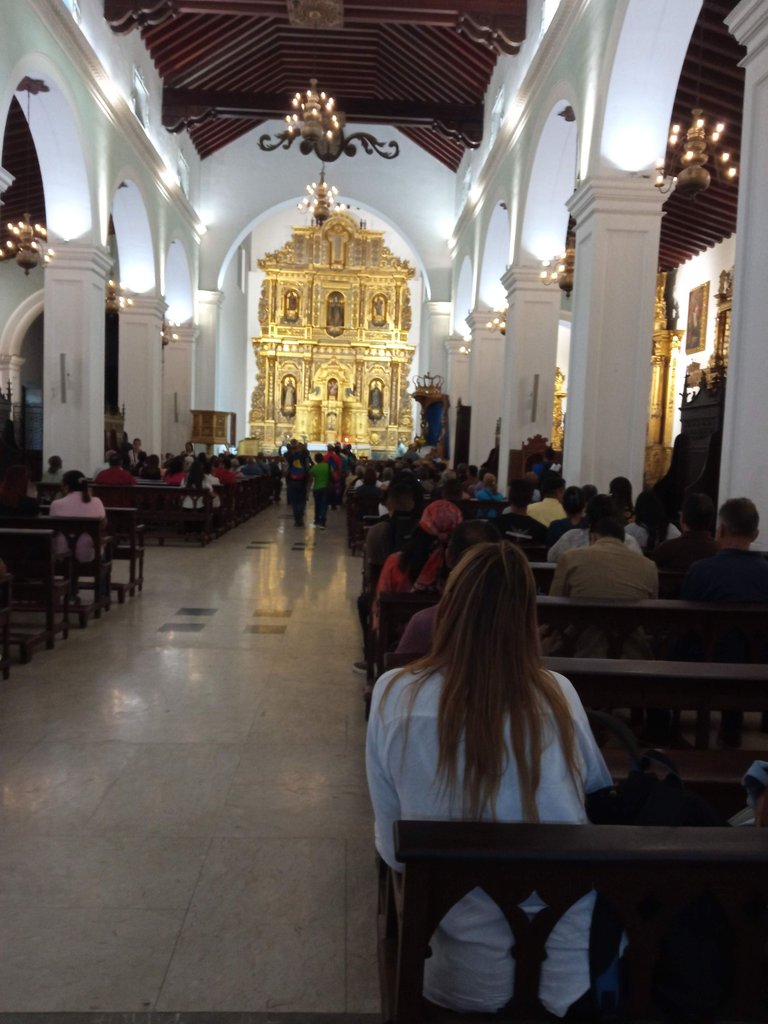
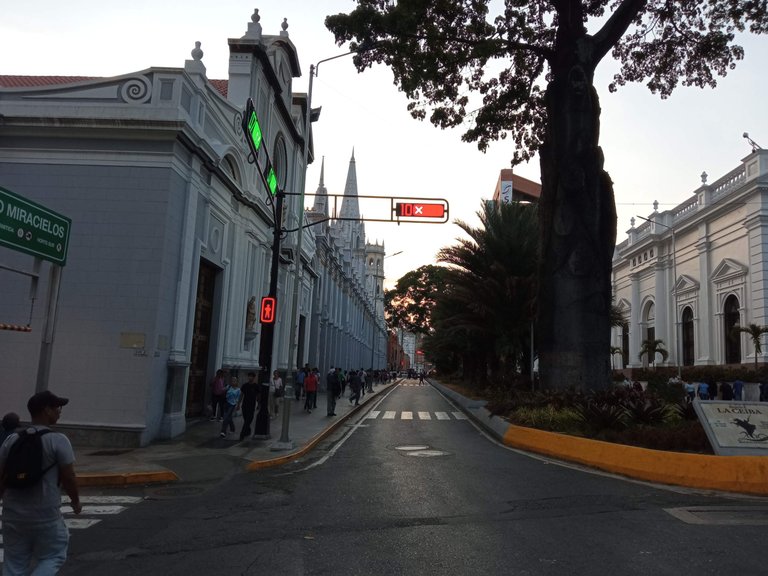
Estimada comunidad de HIVE,cumpliendo con lo que les prometí el pasado jueves 13 de marzo, aquí les presento la segunda parte del texto referido al 450 Aniversario de la Iglesia de San Francisco de Caracas:
Dear HIVE community, fulfilling what I promised you last Thursday, March 13, here is the second part of the text referring to the 450th Anniversary of the Church of San Francisco de Caracas:
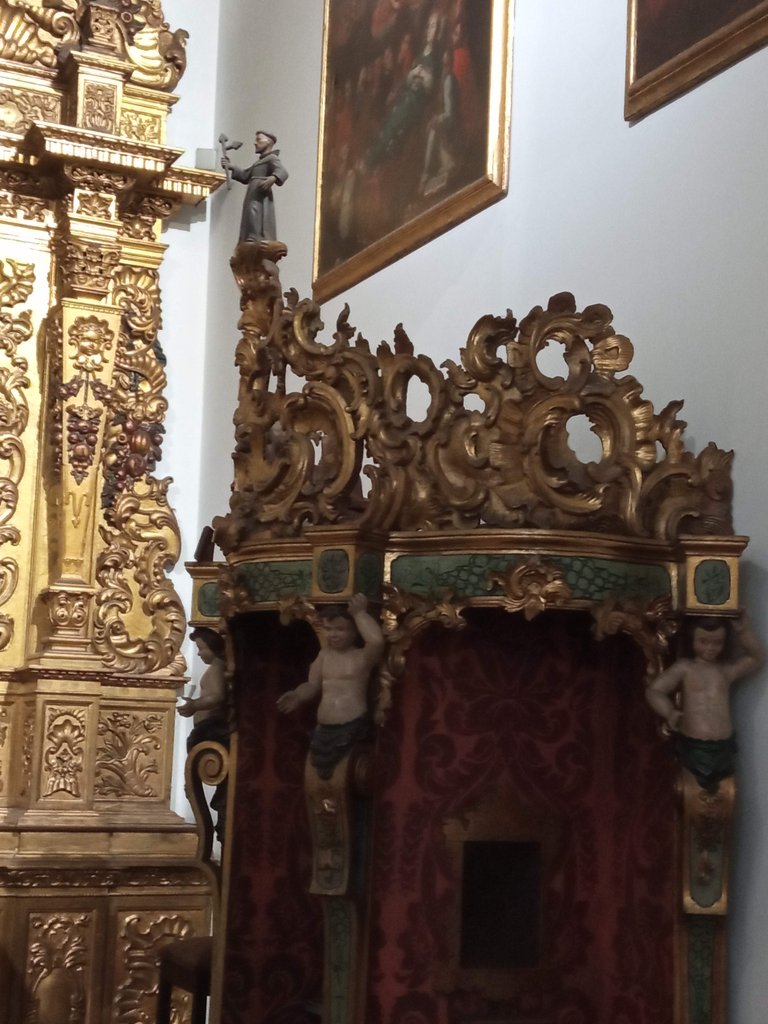
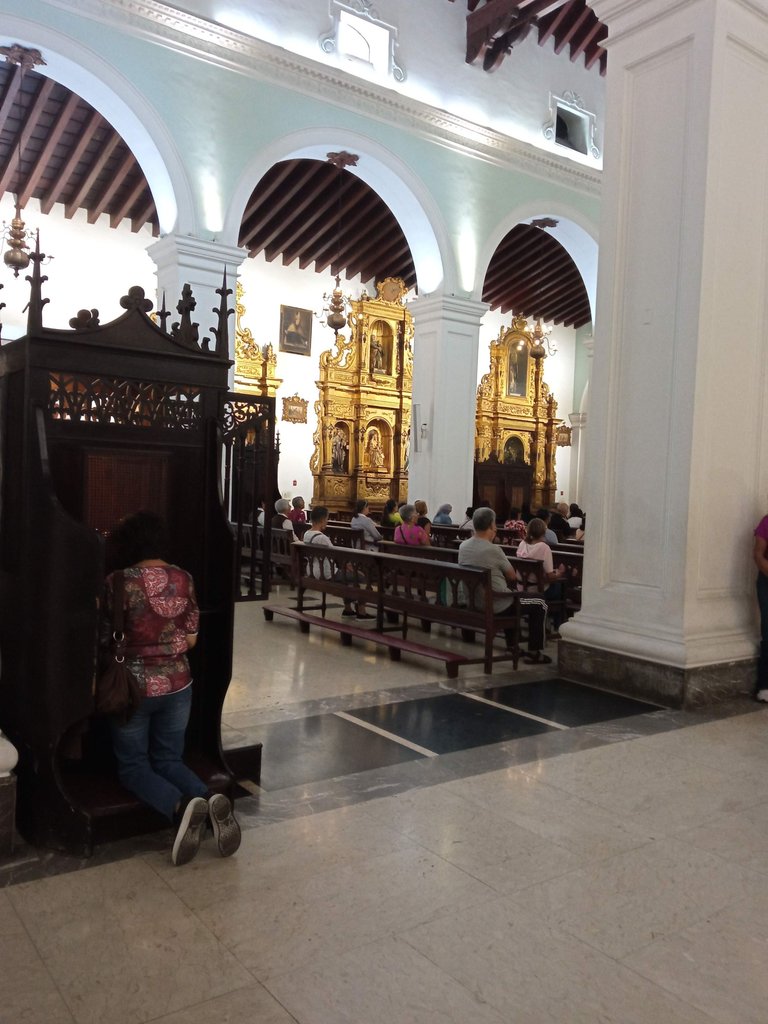

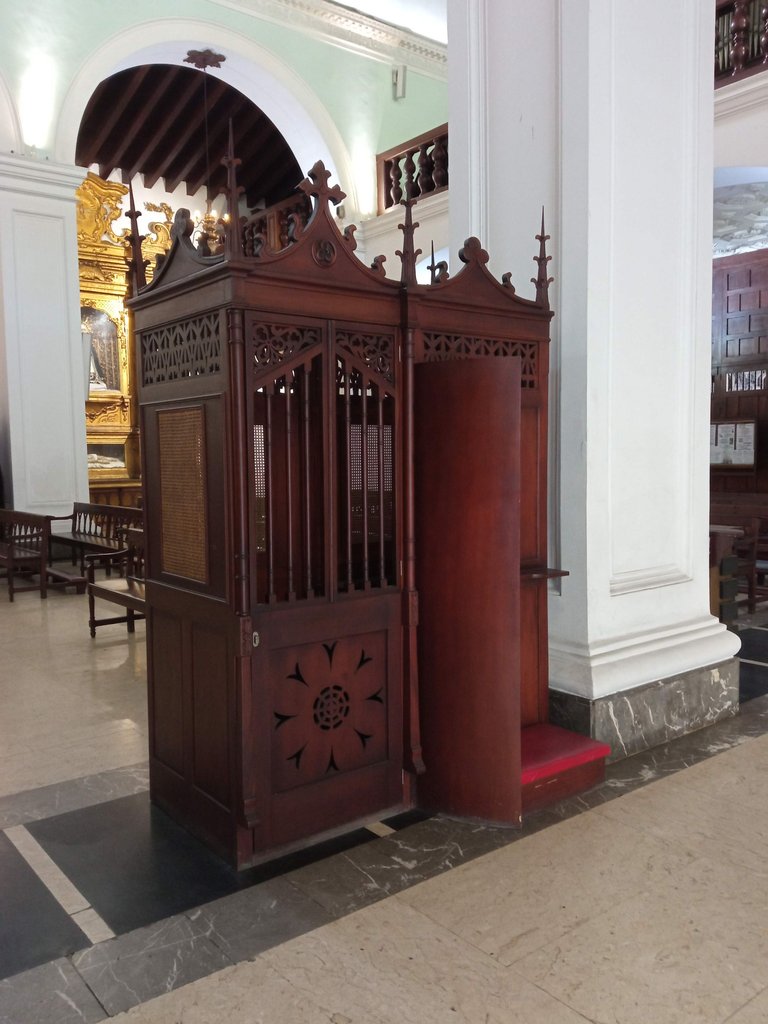
2.- Tal y como les venía comentando, dentro del conjunto de muebles que se encuentran dentro de esta Iglesia, hay un confesionario original del siglo XVIII. Para quienes no conocen las prácticas católicas, un confesionario es un mueble o recinto diseñado para acoger en su interior a un sacerdote y a una persona que confiesa sus faltas o pecados. La lógica indica que las confesiones también pueden realizarse fuera de la iglesia, bien sea visitando a un enfermo o charlando sentados sobre un banco. En este caso, el confesionario al que me refiero está hecho en madera de cedro tallada y labrada, recubierta con una mezcla dorada, adornado con figuras de pequeños ángeles a los lados y, en la parte superior, culmina con la imagen de San Francisco de Asís.
2.- As I was telling you, among the furniture found inside this church, there is an original confessional from the XVIII century. For those who are not familiar with Catholic practices, a confessional is a piece of furniture or enclosure designed to accommodate a priest and a person who confesses his faults or sins. Logic indicates that confessions can also be made outside the church, either by visiting a sick person or chatting while sitting on a bench. In this case, the confessional to which I refer is made of carved and carved cedar wood, covered with a golden mixture, adorned with figures of small angels on the sides and, at the top, culminates with the image of St. Francis of Assisi.
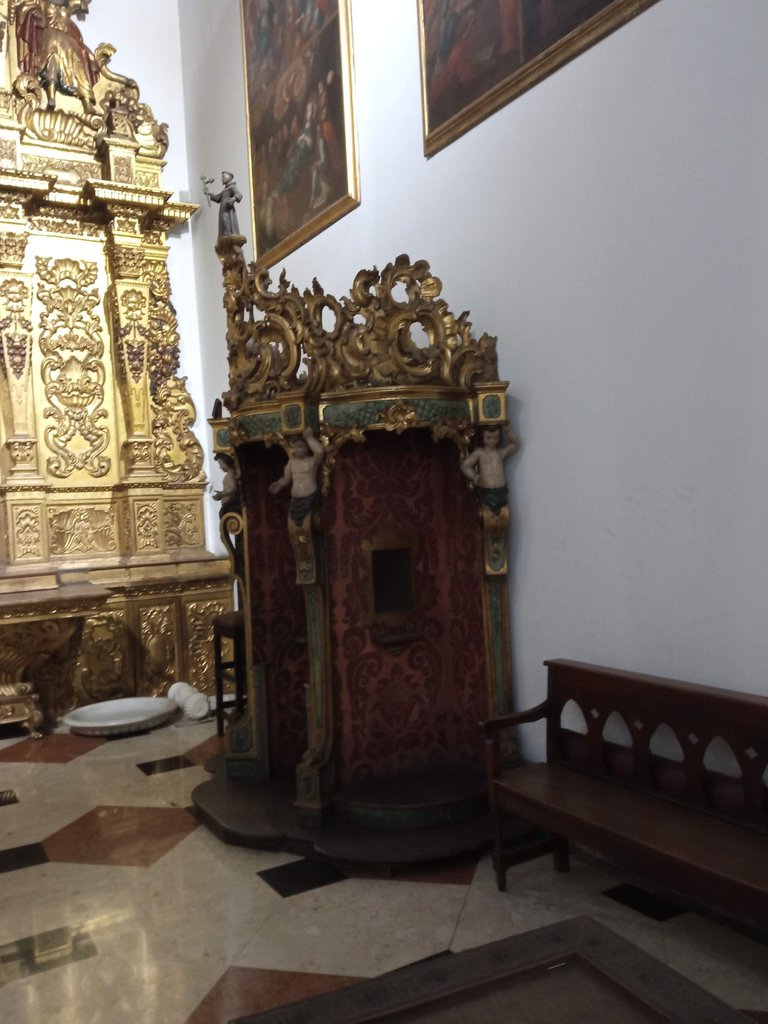
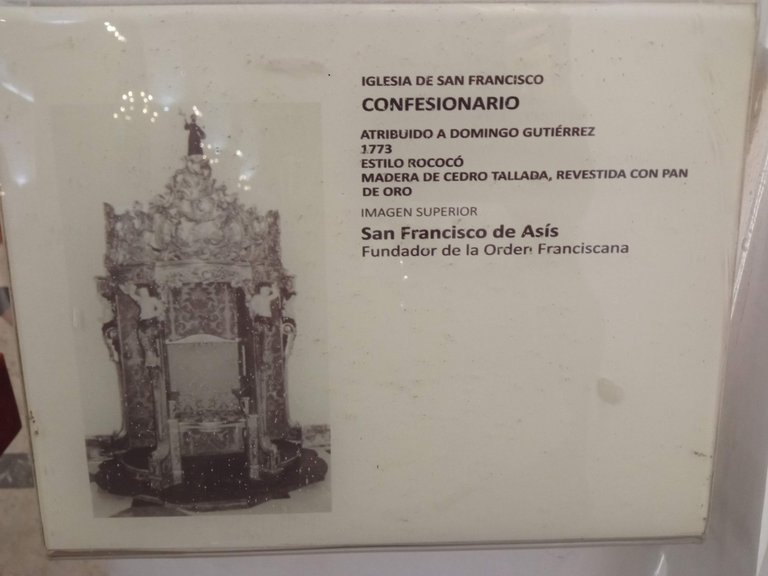
La ficha o rótulo que identifica este mobiliario dice lo siguiente:
Confesionario
Atribuido a Domingo Gutiérrez
1773
Estilo Rococó
Madera de cedro tallada revestida con pan de oro
Imagen superior
San Francisco de Asís
Fundador de la Orden Franciscana
The card or label that identifies this furniture reads as follows:
Confessional
Attributed to Domingo Gutiérrez
1773
Rococo style
Carved cedar wood covered with gold leaf.
Image above
Saint Francis of Assisi
Founder of the Franciscan Order
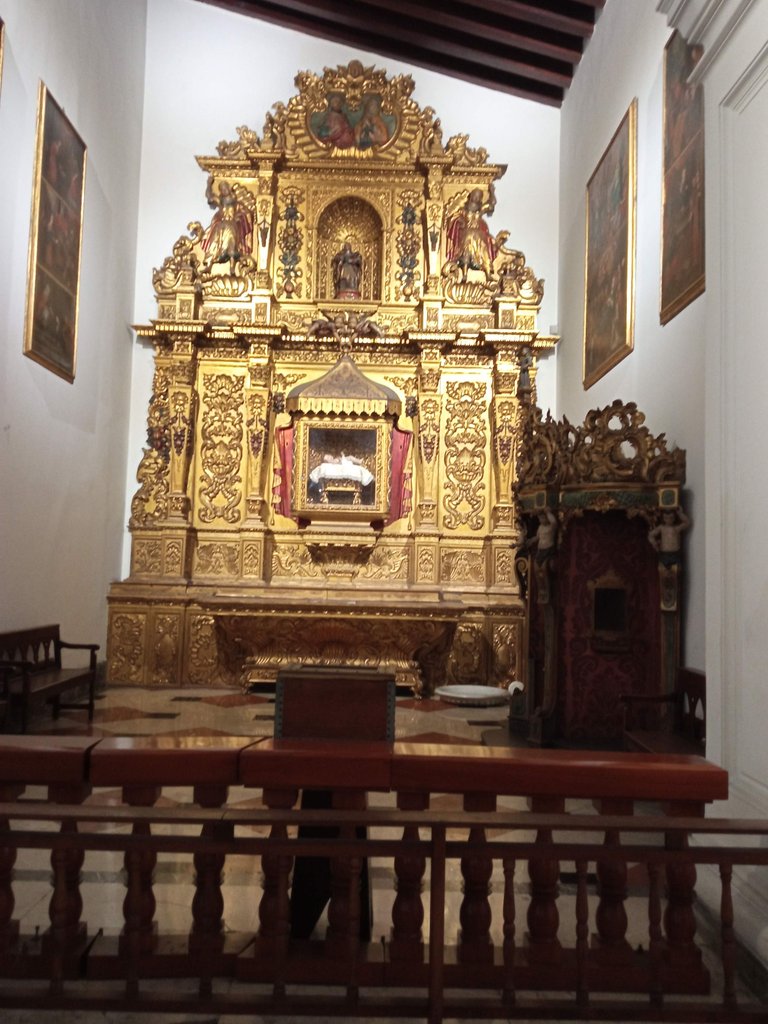

Actualmente este confesionario se encuentra resguardado en la nave oeste, cerca del altar dedicado al Santo Niño de Belén, cuya imagen escultórica data de 1697. Además de esta antigua pieza, existen otros 5 confesionarios de diseño más moderno, distribuidos en las naves laterales para el uso diario de los fieles que asisten al templo.
Currently this confessional is located in the west nave, near the altar dedicated to the Santo Niño de Belén, whose sculptural image dates from 1697. In addition to this old piece, there are 5 other confessionals of more modern design, distributed in the lateral naves for the daily use of the faithful who attend the temple.
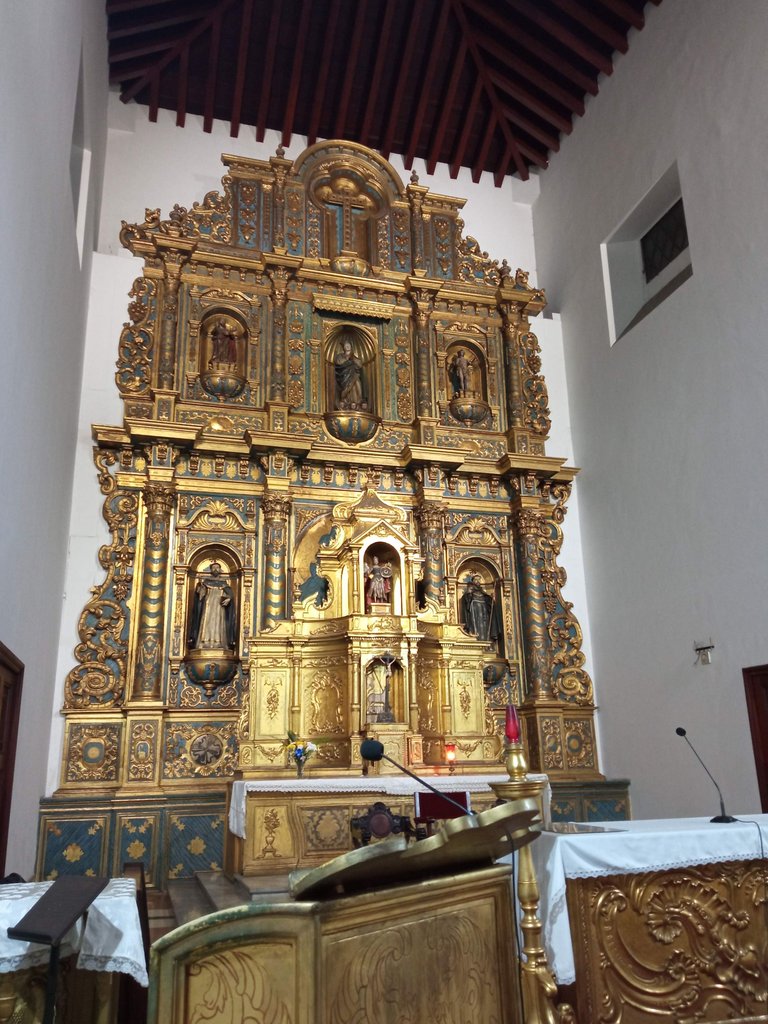

3.- En cuanto a la estructura arquitectónica de la Iglesia, ésta presenta una planta basilical rectangular dividida en 3 naves: una central y dos laterales, separadas entre sí por columnas de medio arco. La nave central culmina con un altar mayor donde se encuentra un gran retablo dorado al fondo, intercalado con tonos azules, verdes y turquesas, lo que le confiere armónicos contrastes a todo el conjunto. En medio de este retablo se encuentra la imagen de la Virgen María, ya que el nombre original del templo es: Iglesia de la Inmaculada concepción, pero popularmente es conocida como Iglesia de San Francisco.
3.-As for the architectural structure of the church, it has a rectangular basilica plan divided into three naves: a central nave and two side naves, separated by half-arched columns. The central nave culminates with a high altar where there is a large golden altarpiece in the background, interspersed with blue, green and turquoise tones, which gives harmonious contrasts to the whole. In the middle of this altarpiece is the image of the Virgin Mary, since the original name of the temple is: Church of the Immaculate Conception, but it is popularly known as Church of San Francisco.
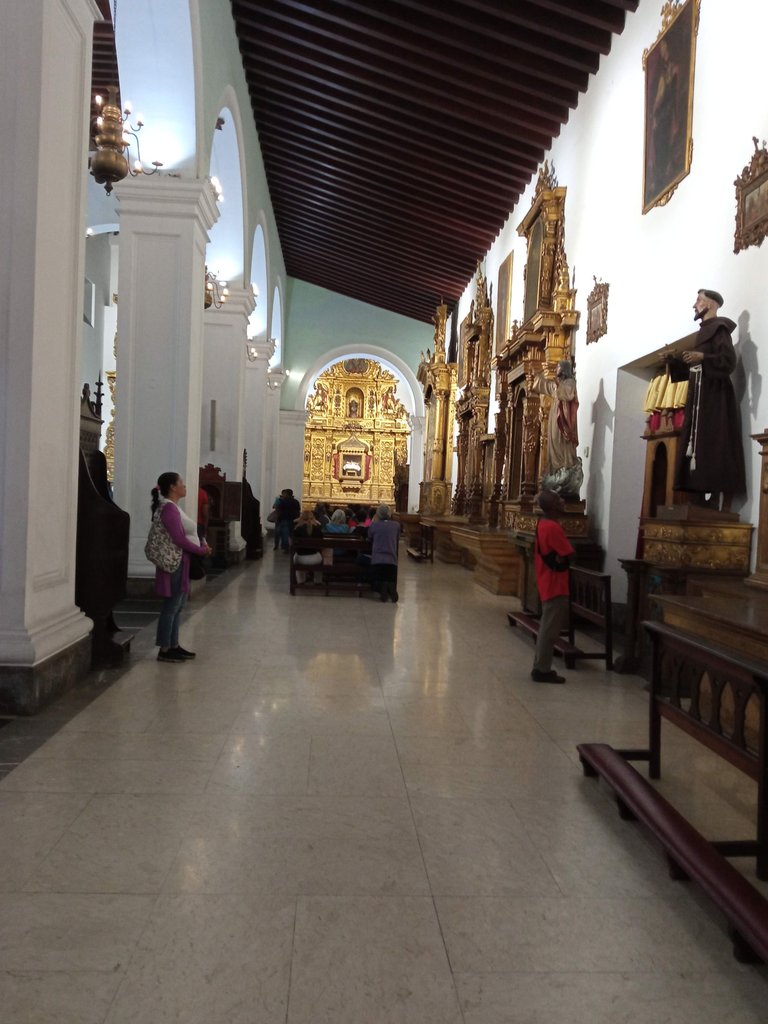
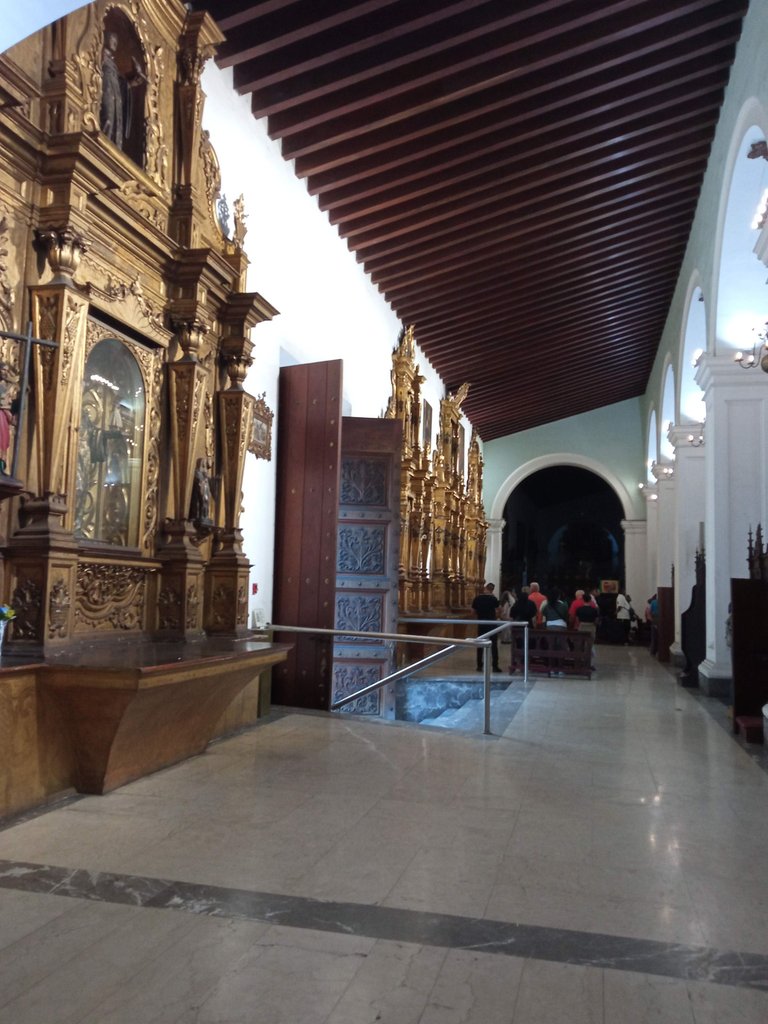
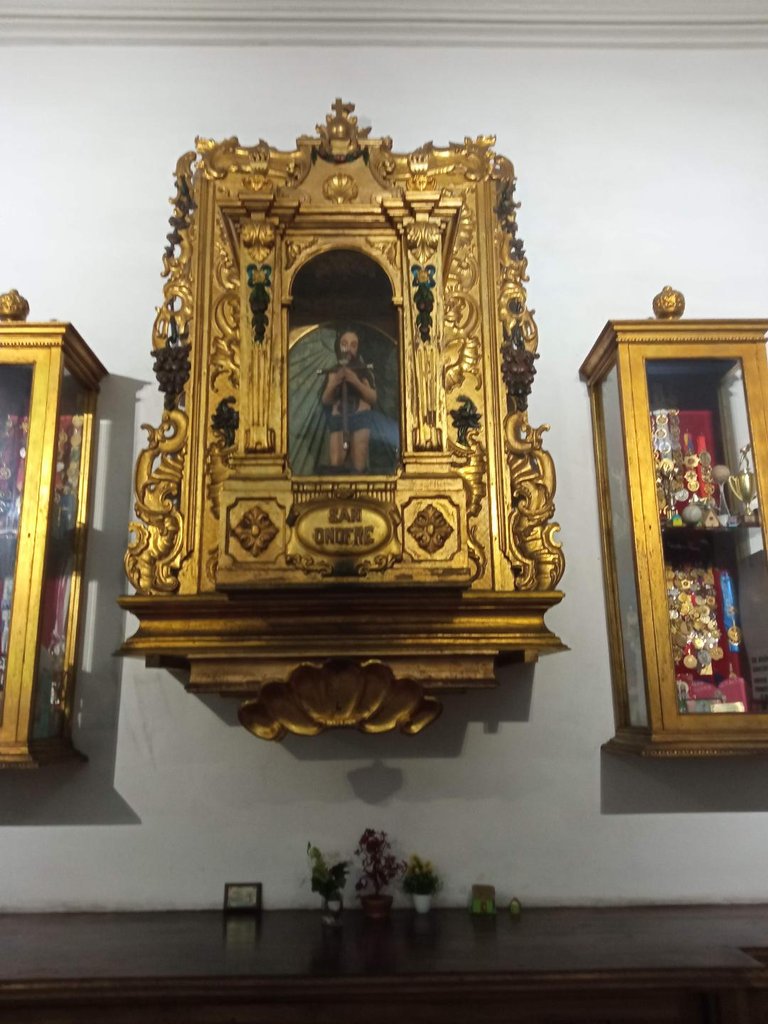
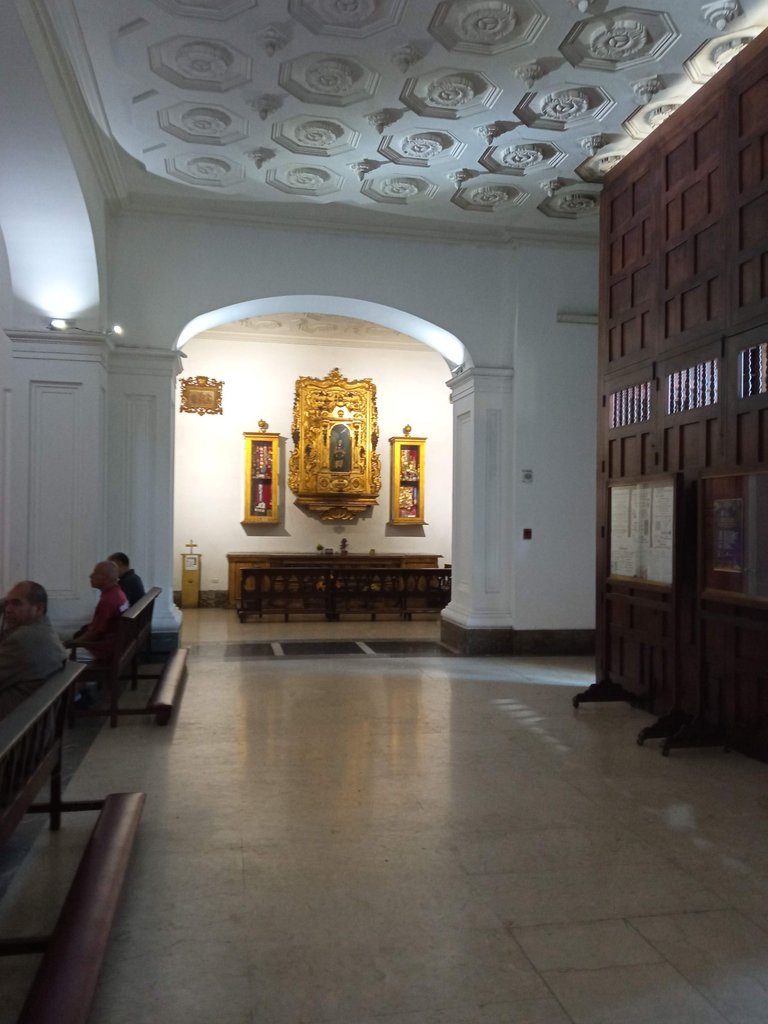
4.- En las naves laterales se encuentran 4 grandes retablos adosados a cada lado con diferentes advocaciones, como San Antonio, Virgen de la soledad, etc. etc., pero en la nave oeste se observa un quinto retablo, más pequeño, colocado en honor a San Onofre, destinado al culto que despierta este Santo eremita en los fieles, quienes acuden cada año, el día 12 de junio, para venerar su imagen.
4.-In the lateral naves there are 4 large altarpieces attached to each side with different dedications, such as San Antonio, Virgen de la soledad, etc. etc., but in the west nave there is a fifth altarpiece, smaller, placed in honor of San Onofre, destined to the cult that this hermit Saint awakens in the faithful, who come every year, on June 12, to venerate his image.
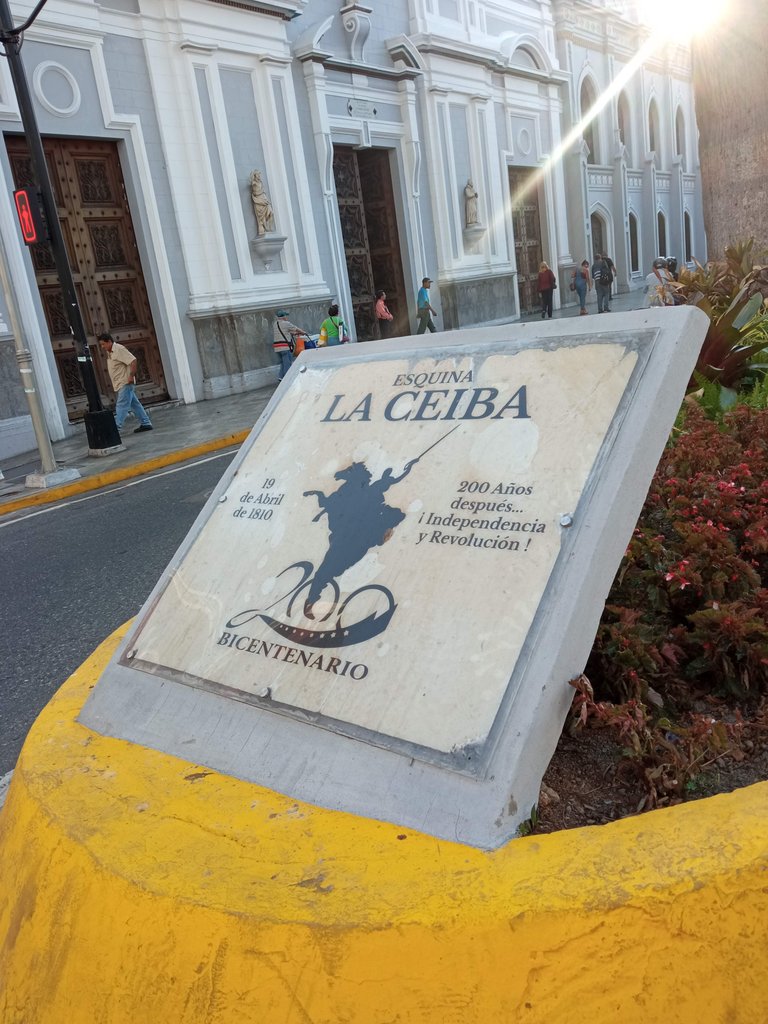

5.- En la actualidad, la Iglesia de San Francisco puede albergar alrededor de 400 visitantes, y se encuentra bajo la custodia de las Órdenes Jesuita y Franciscanas. La fachada principal del templo mide 25 metros de alto y está decorada al estilo neoclásico. Otro elemento que forma parte de este patrimonio histórico y religioso es el árbol, comúnmente conocido como la ceiba de San Francisco, que tiene 150 años de existencia ubicado al frente de esa edificación.
5.-At present, the Church of San Francisco can accommodate around 400 visitors, and is under the custody of the Jesuit and Franciscan Orders. The main façade of the temple is 25 meters high and is decorated in neoclassical style. Another element that is part of this historical and religious heritage is the tree, commonly known as the ceiba de San Francisco, which is 150 years old and is located in front of the building.

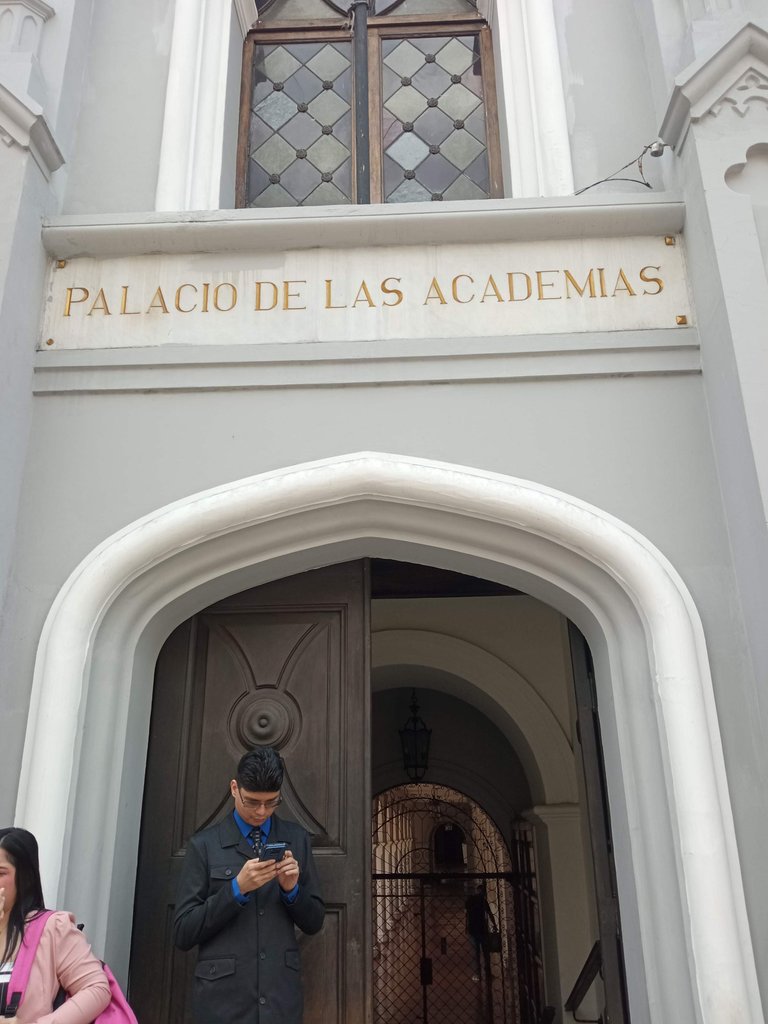
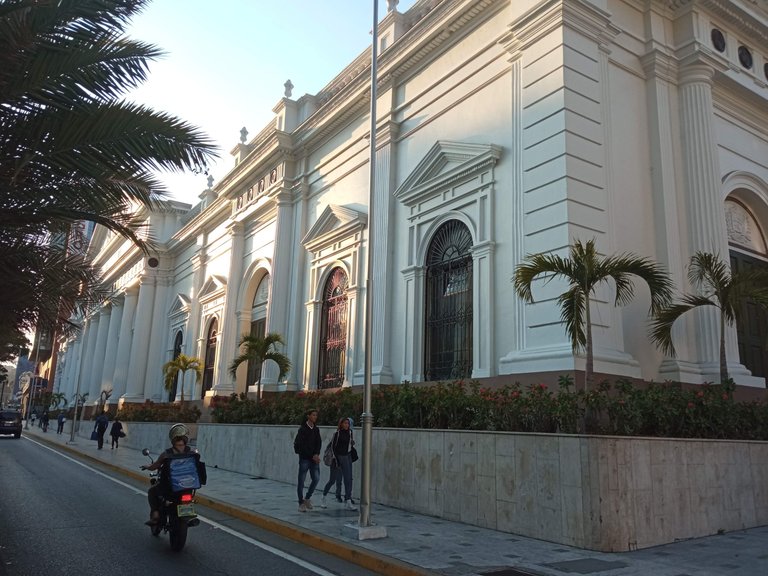
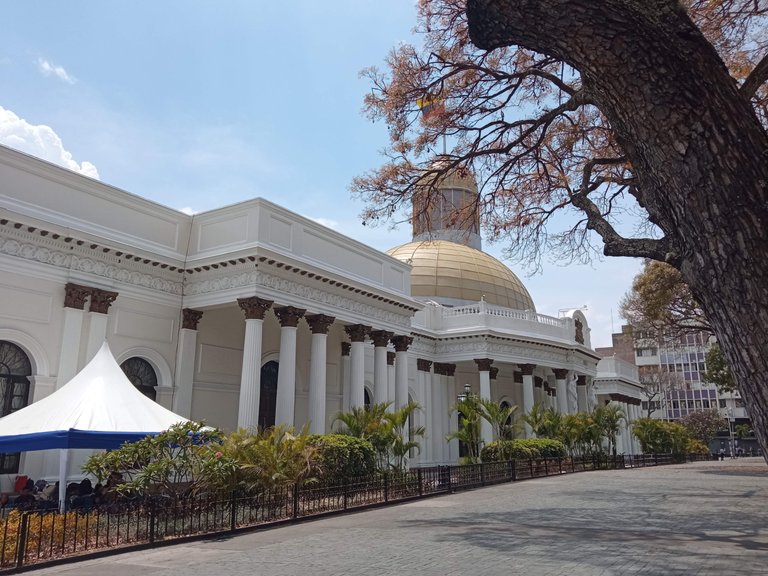
6.- La construcción que sigue a la Iglesia fue originalmente el convento que fundaron los frailes a su llegada al país, posteriormente pasó a ser el recinto de la Universidad Central de Venezuela y finalmente se convirtió en lo que hoy se conoce como “El palacio de las Academias”. Ambos edificios –Iglesia y Academia– están frente a la parte posterior del Palacio Federal Legislativo, también conocido como Capitolio. Es importante mencionar que alrededor de esta zona se ubican otras importantes instituciones como el Centro Simón Bolívar, la Asamblea Nacional, el Centro Nacional Electoral, la Catedral de Caracas, la Iglesia de Santa Teresa y el Consejo Municipal, entre muchos otros establecimientos.
6.-The building that follows the Church was originally the convent founded by the friars upon their arrival in the country, later became the site of the Central University of Venezuela and finally became what is known today as “The Palace of the Academies”. Both buildings -Church and Academy- are in front of the back of the Federal Legislative Palace, also known as the Capitol. It is important to mention that around this area are located other important institutions such as the Simón Bolívar Center, the National Assembly, the National Electoral Center, the Cathedral of Caracas, the Church of Santa Teresa and the Municipal Council, among many other establishments.
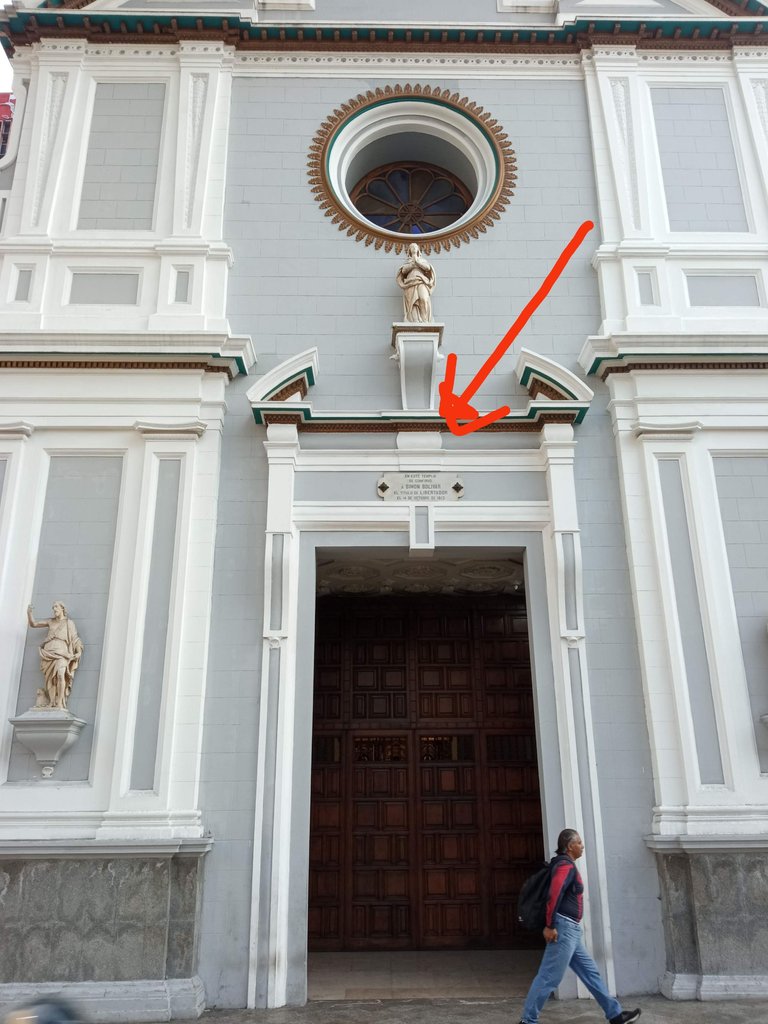
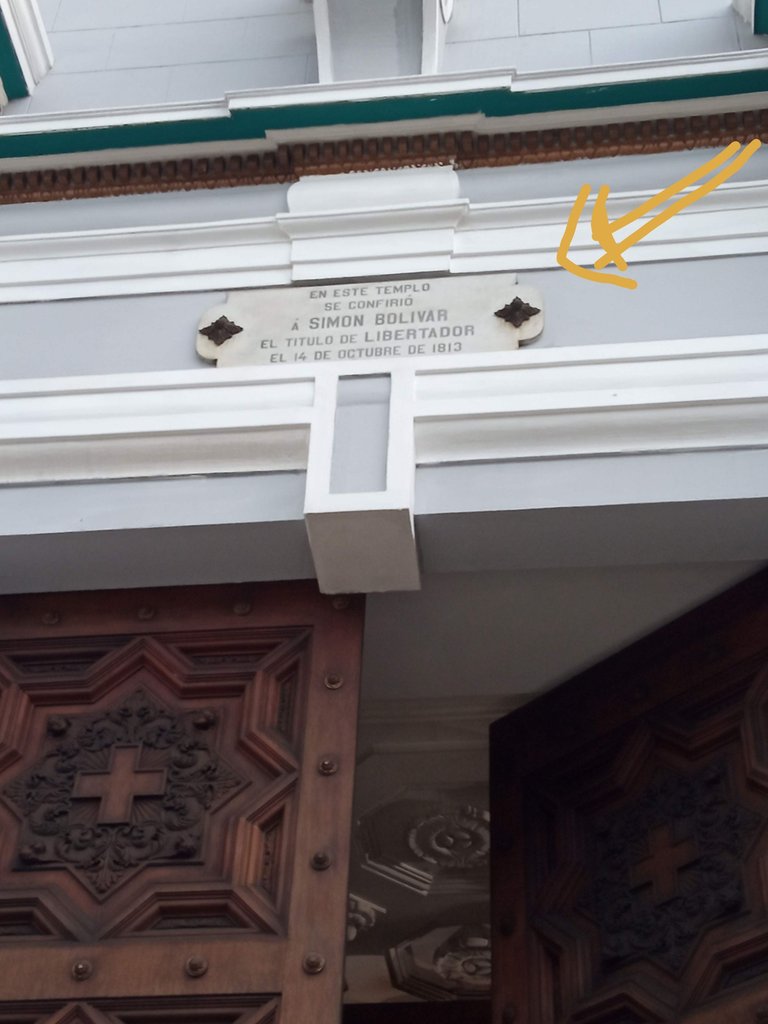

7.- Fue en la Iglesia de San Francisco donde se le otorgó a Simón Bolívar el título de Libertador de Venezuela, tal como lo confirma el letrero que se encuentra sobre la puerta principal de entrada del templo, que dice lo siguiente:
En este templo
Se confirió
A SIMÓN BOLÍVAR
El título de LIBERTADOR
El 14 de octubre de 1813
7.-It was in the Church of San Francisco where Simón Bolívar was granted the title of Liberator of Venezuela, as confirmed by the sign above the main entrance door of the church, which reads as follows:
In this temple
It was conferred
TO SIMÓN BOLÍVAR
The title of LIBERTADOR
On October 14, 1813
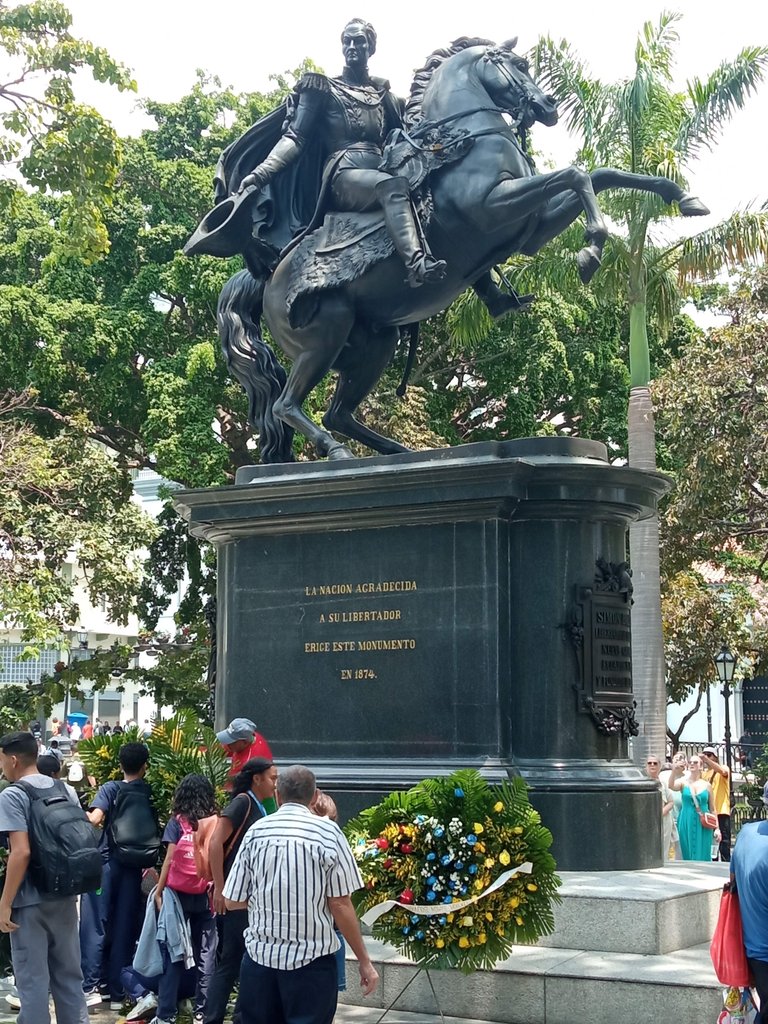
Después de su muerte, el 17 de diciembre de 1830, los restos de Bolívar fueron repatriados y recibidos en esta misma Iglesia, en diciembre de 1842, para posteriormente ser trasladados a la Catedral de Caracas.
Gladys Yunes Yunes
Fotos Gladys Yunes Yunes
Fuentes de consulta:
-Iglesia de San Francisco de Caracas y su colección
IAM Venezuela / https://iamvenezuela.org › Todos/consulta: 5-3-25
-450 años del convento e iglesia de San Francisco en Caracas ...
YouTube · Unión Radio Noticias/ consulta: 11-3-25
- Iglesia de San Francisco. Para el período colonial esta ...
Facebook / https://m.facebook.com › groups › posts//consulta: 1-3-25
After his death on December 17, 1830, Bolivar's remains were repatriated and received in this same church in December 1842, to be later transferred to the Cathedral of Caracas.
Gladys Yunes Yunes
Photos Gladys Yunes Yunes
Sources of consultation:
-Church of San Francisco de Caracas and its collection.
IAM Venezuela / https://iamvenezuela.org ' All/query: 5-3-25
-450 years of the convent and church of San Francisco in Caracas ...
... - Unión Radio Noticias/consultation: 11-3-25
- San Francisco Church. For the colonial period this ...
Facebook / https://m.facebook.com ' groups ' posts//query: 1-3-25
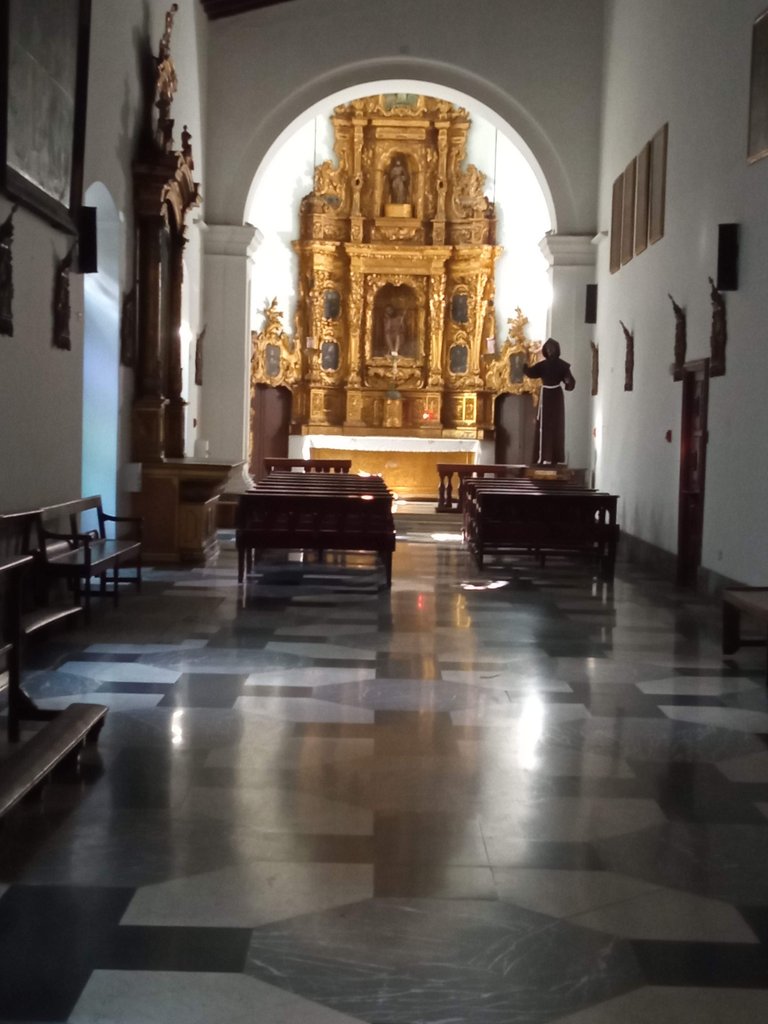


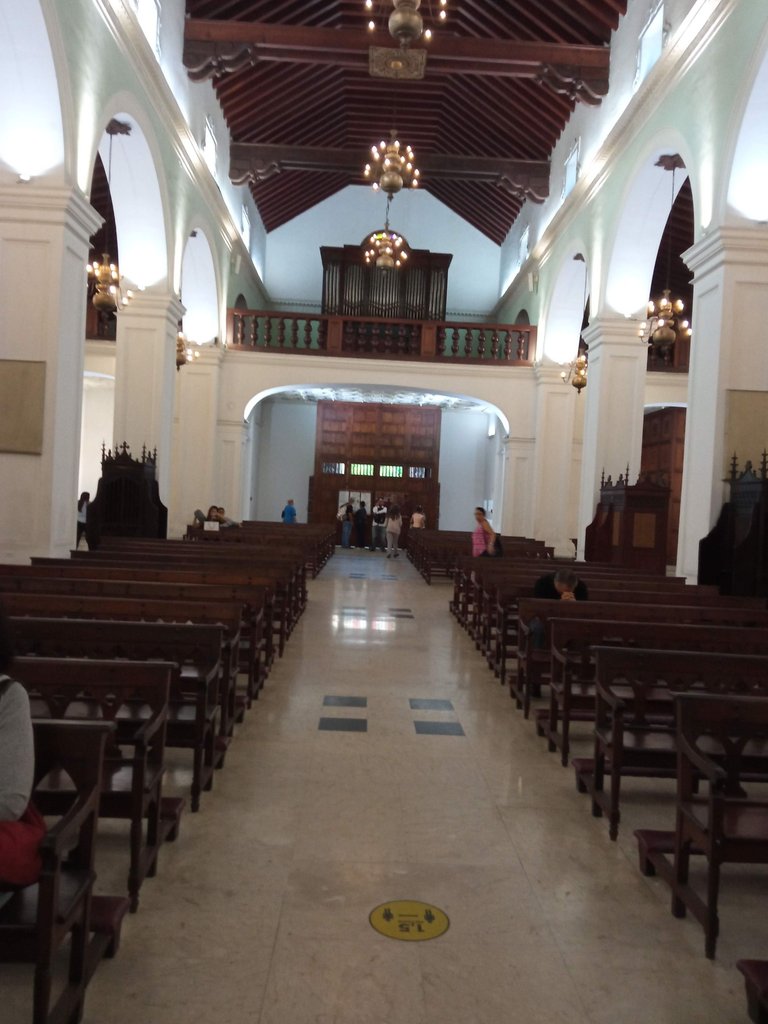
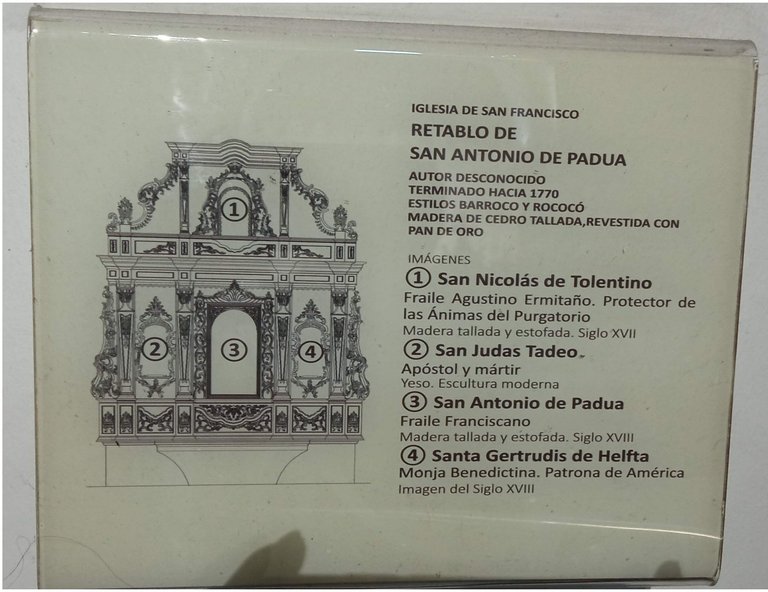
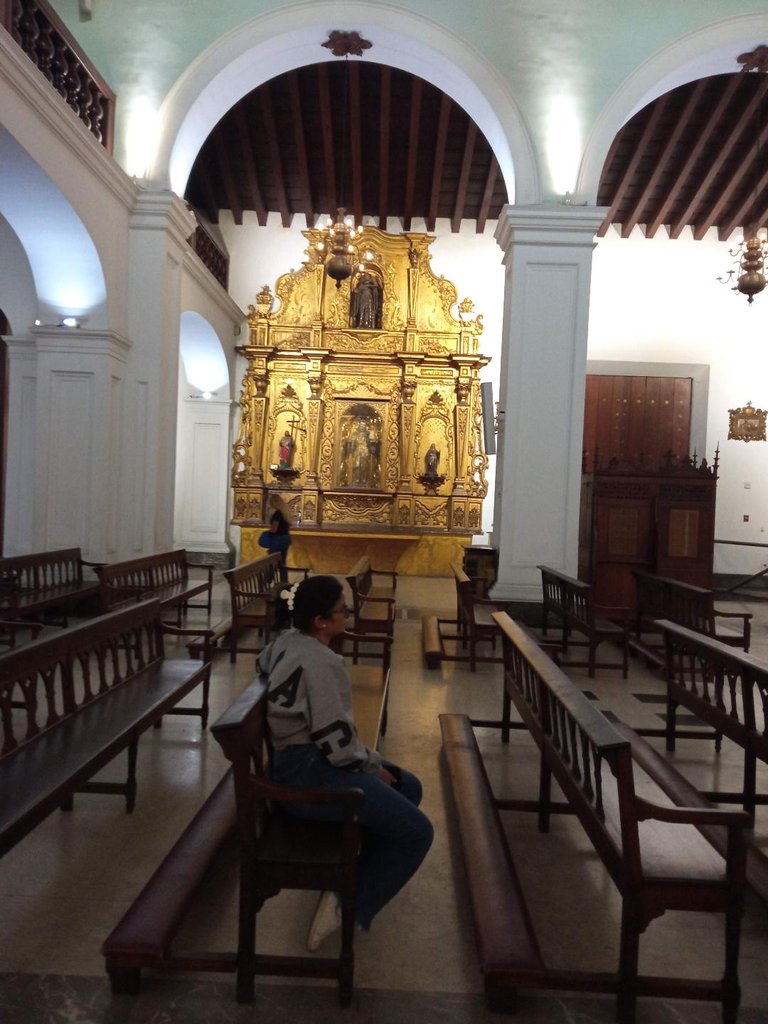
¿ᴺᵉᶜᵉˢᶦᵗᵃˢ ᴴᴮᴰ? ᵀᵉ ˡᵒ ᵖʳᵉˢᵗᵃᵐᵒˢ ᶜᵒⁿ @ruta.loans